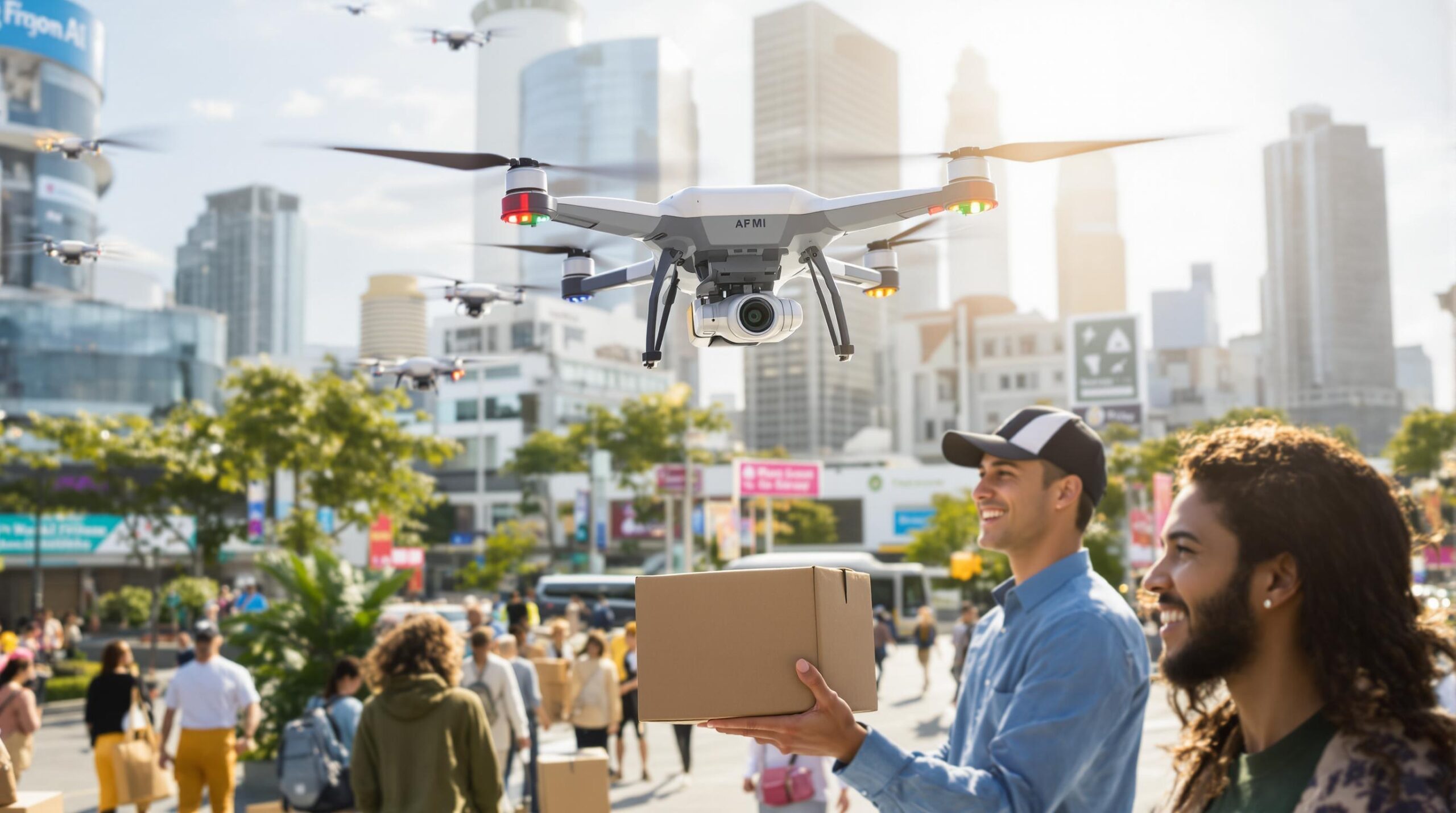Emerging technologies continue to disrupt the logistics industry. Among these innovations, AI-powered delivery drones command special attention. They aspire to reinvent how businesses deliver packages directly to their customers’ doorsteps. This article delves into how drones equipped with artificial intelligence are significantly reshaping logistics and transforming e-commerce.
The Synergy of Artificial Intelligence and Drone Technology
Traditional delivery methods often rely on large fleets of vehicles. These methods struggle with traffic congestion, delivery delays, and rising operational costs. Drones equipped with AI solve several of these pain points. They use sophisticated algorithms to calculate optimal flight paths and avoid obstacles.
AI grants these drones a level of autonomy not possible a few years ago. They recognize traffic patterns and weather conditions. Onboard sensors and cameras scan for hazards. The drones instantly analyze real-time data, making intelligent decisions during flight. This critical leap forward makes drone delivery viable across more environments than ever before.
Artificial intelligence empowers drones to handle complex delivery scenarios. For instance, machine learning helps drones adapt to changing terrain or dynamic obstacles. As drone software improves, their operational range and reliability continue to expand. This synergy between AI and drone hardware propels the evolution of last-mile logistics.
Impact on E-Commerce Fulfillment
E-commerce growth places immense pressure on delivery systems. Customers expect same-day or even instant fulfillment. Meeting these heightened expectations requires a new approach to distribution.
AI-powered delivery drones close the gap between the warehouse and the doorstep. They can deliver small packages directly and quickly. E-commerce giants are piloting such technology. Amazon and Walmart have launched drone trials in select regions. These drones can fulfill orders autonomously, often within an hour of purchase.
Drones bypass ground traffic, never face bottlenecks, and cover challenging terrain with ease. This rapid delivery makes spontaneous and urgent purchases more appealing to shoppers. Retailers leveraging drone delivery gain a competitive edge by offering an unparalleled speed and service experience to their customers.
Enhancing Urban and Rural Logistics
Drones equipped with AI benefit both urban and rural areas. In crowded cities, drones circumvent congestion that plagues traditional couriers. In rural or remote locations, drones offer reliable access where delivery trucks struggle or cannot operate efficiently.
Some companies collaborate with local authorities to create drone corridors over urban landscapes. These defined air routes help ensure safe and systematic operations. AI-powered navigation systems keep drones safely separated from one another and avoid populated zones. As urban airspace logistics evolve, regulators and industry leaders continue to refine best practices for safety.
In rural settings, drones provide lifelines to essential goods and medicine. AI guidance allows reliable delivery over long distances, even in challenging weather. Healthcare providers and non-profit agencies also use drones to reach disaster zones or underserved communities. These real-world applications highlight the transformative impact of AI-guided drones well beyond city limits.
Environmental and Economic Benefits
Airborne delivery drones run on electricity, not fossil fuels. This shift reduces emissions compared to gas-powered delivery vans. Their lightweight design minimizes energy consumption per parcel.
Optimized flight paths also trim unnecessary travel, further reducing energy waste. When scaled across thousands of daily deliveries, the overall environmental benefit becomes significant. Many companies now invest in drone fleets as part of their pledge toward carbon neutrality.
AI-powered drones also bring economic advantages. Automation enables companies to reduce labor and operational costs. Drones require fewer human resources for short or uncomplicated deliveries. Lower costs can translate into savings for both retailers and their customers, making expedited delivery affordable and accessible.
Challenges and Considerations in Drone Deployment
Despite their promise, AI-powered drones face regulatory, technical, and societal challenges. Airspace regulations must adapt to accommodate these new vehicles. Authorities carefully scrutinize flight altitudes, no-fly zones, and privacy issues. Establishing global standards and consistent rules remains an ongoing process.
Battery life limits range and payload capacity. Current drones handle small parcels, but not heavy or oversized packages. Battery advancements are necessary before drones can fully compete with delivery vans over long distances or with large loads.
Security and privacy concerns persist, especially in residential neighborhoods. AI helps drones recognize and avoid private property, but public trust in drone technology is essential. Companies are engaging communities through transparent pilot programs and feedback initiatives.
Looking Ahead: The Future of AI-Powered Drone Logistics
Continuous improvements in AI, battery tech, and air traffic management will accelerate drone integration. 5G networks, edge computing, and IoT devices enhance drone responsiveness and data analysis. These advancements promise even greater safety, efficiency, and reliability for future drone fleets.
As more pilot projects prove successful, consumer acceptance of unmanned aerial vehicles will increase. Collaborative efforts among regulators, logistics companies, and the AI community will shape best practices. Future air corridors and droneports could become common features in cities and towns.
Experts forecast a new era in which AI-powered delivery drones become an everyday part of logistics networks around the globe. Business models will evolve to leverage aerial distribution hubs, while e-commerce platforms adapt to on-demand expectations. These dynamic shifts will reimagine not just delivery but the entire retail experience.
Conclusion: Charting the Aerial Frontier of Commerce
AI-powered delivery drones are more than a technological novelty. They represent a seismic shift in distribution and customer engagement. Combining agility, efficiency, and intelligence, drones are fast becoming a cornerstone of modern logistics. As the technology matures further, businesses and consumers alike stand poised to benefit from faster, greener, and more reliable delivery solutions.
The aerial revolution is unfolding rapidly, propelled by advancements in artificial intelligence and drone engineering. As policy, practice, and public perception align, AI-powered drones will continue reshaping the logistics landscape and redefining the boundaries of e-commerce fulfillment.

